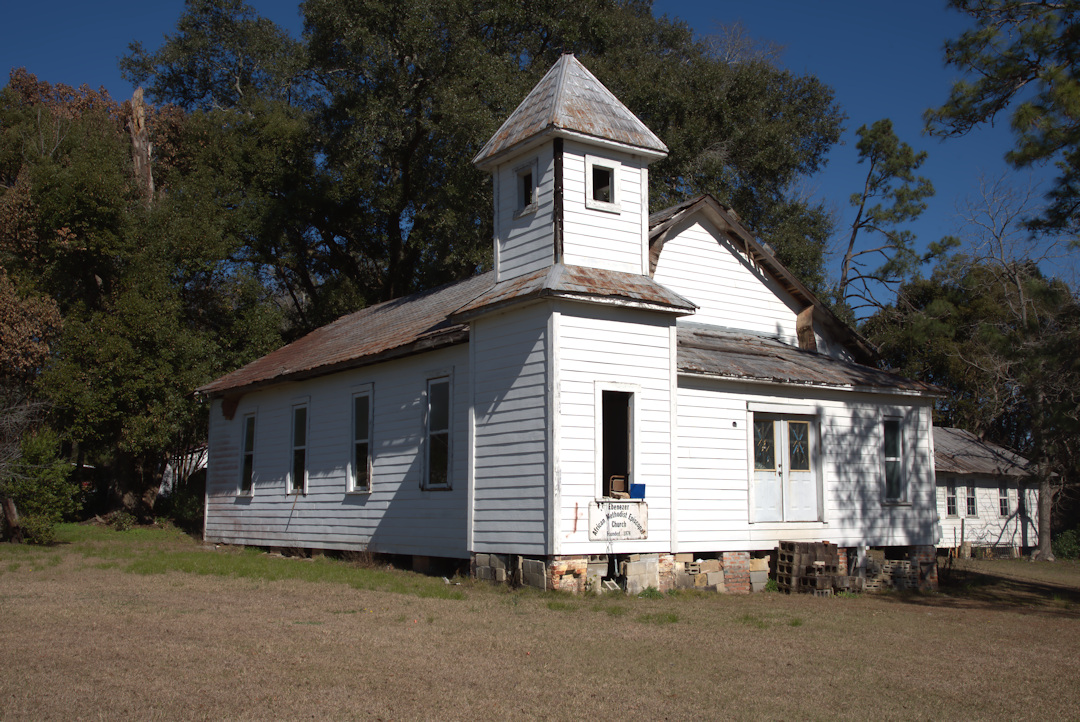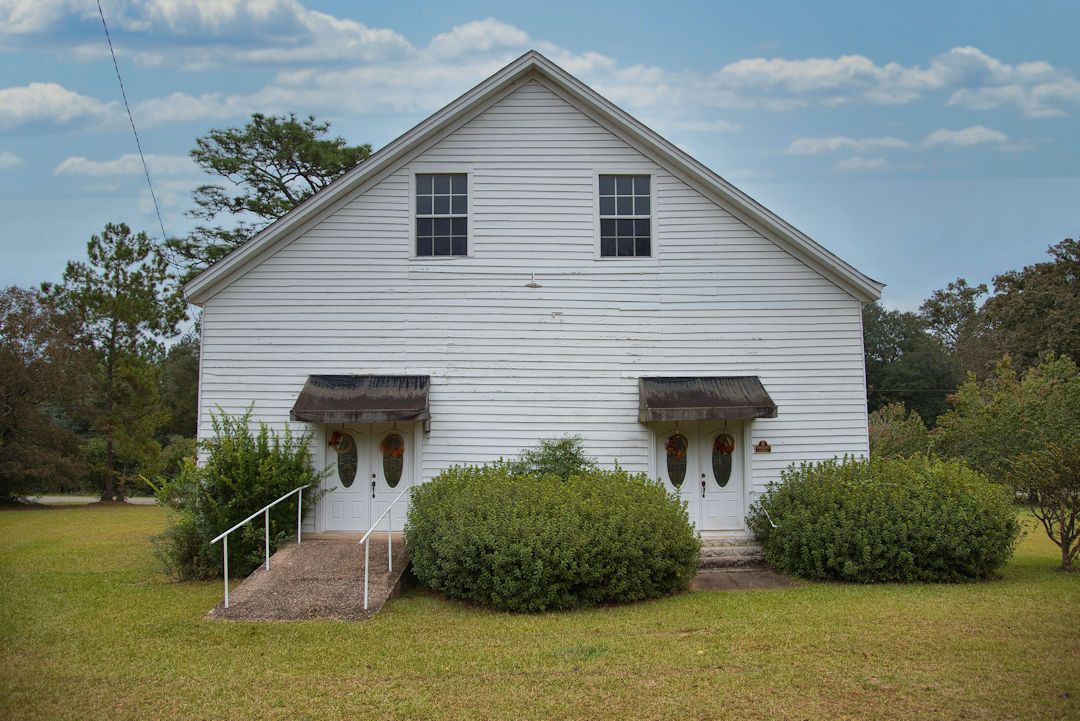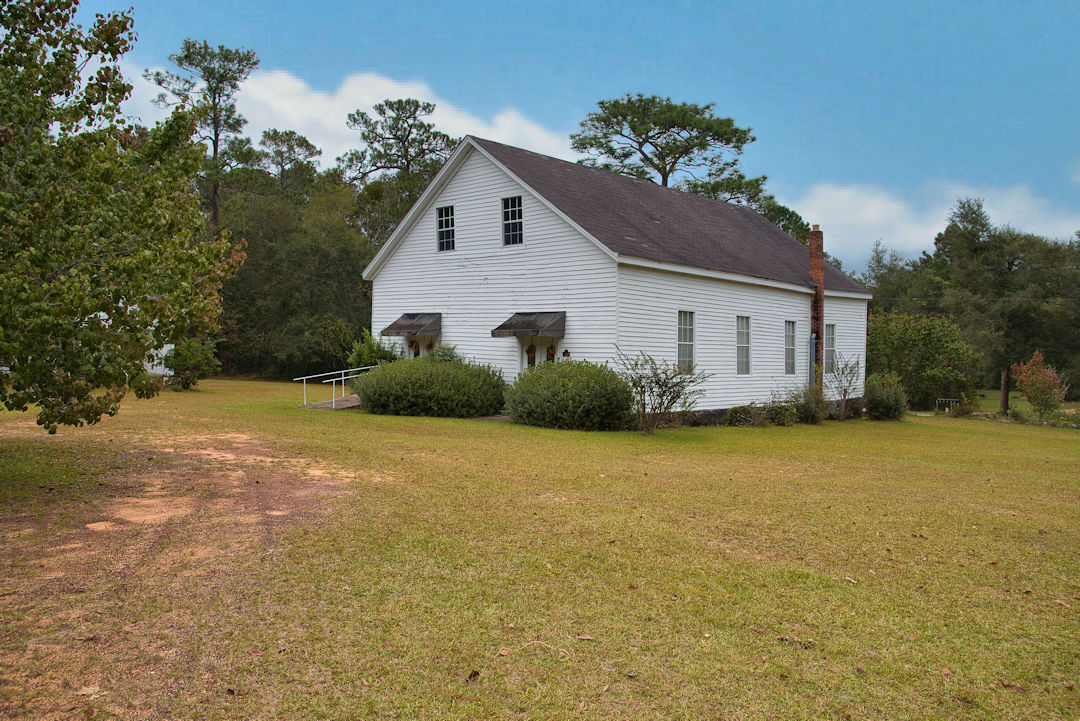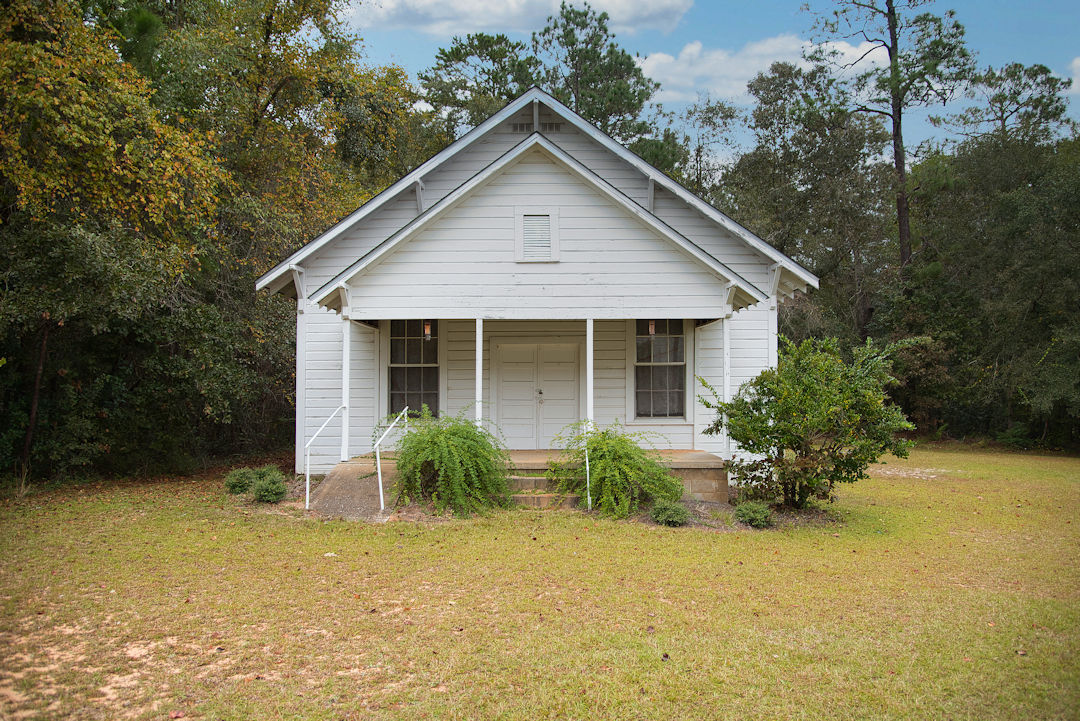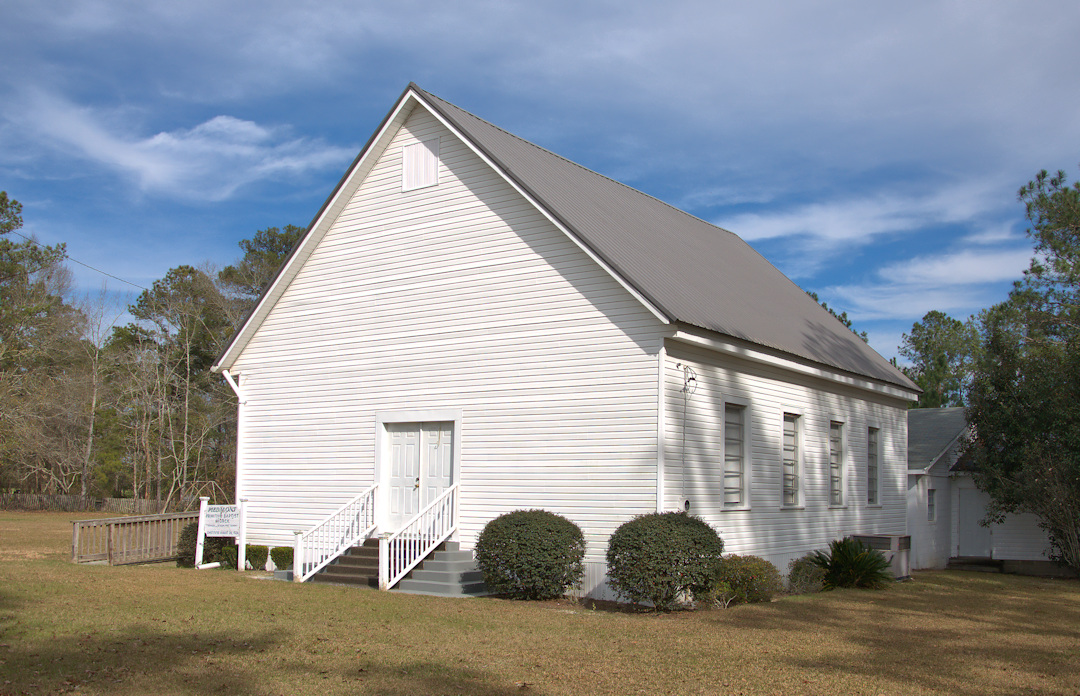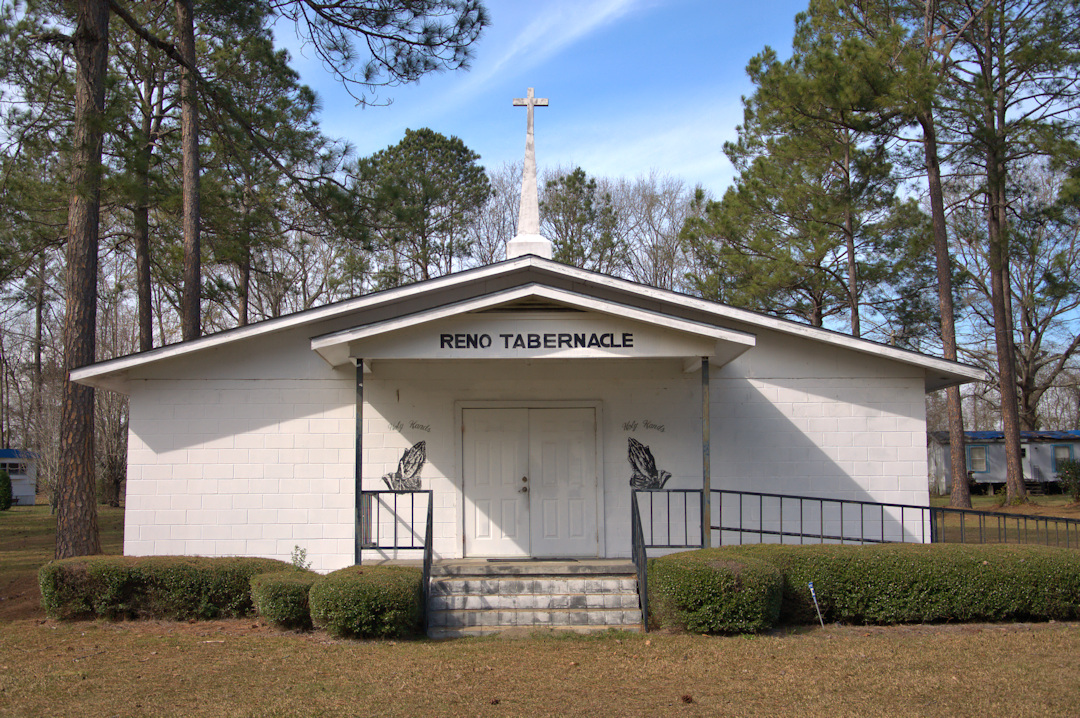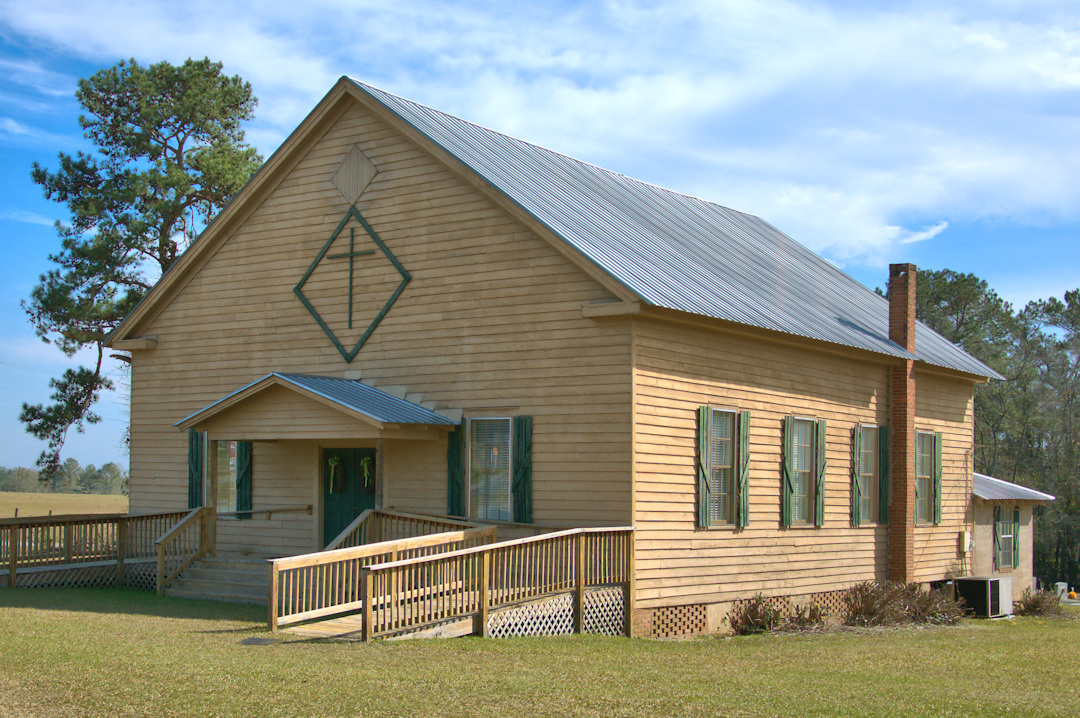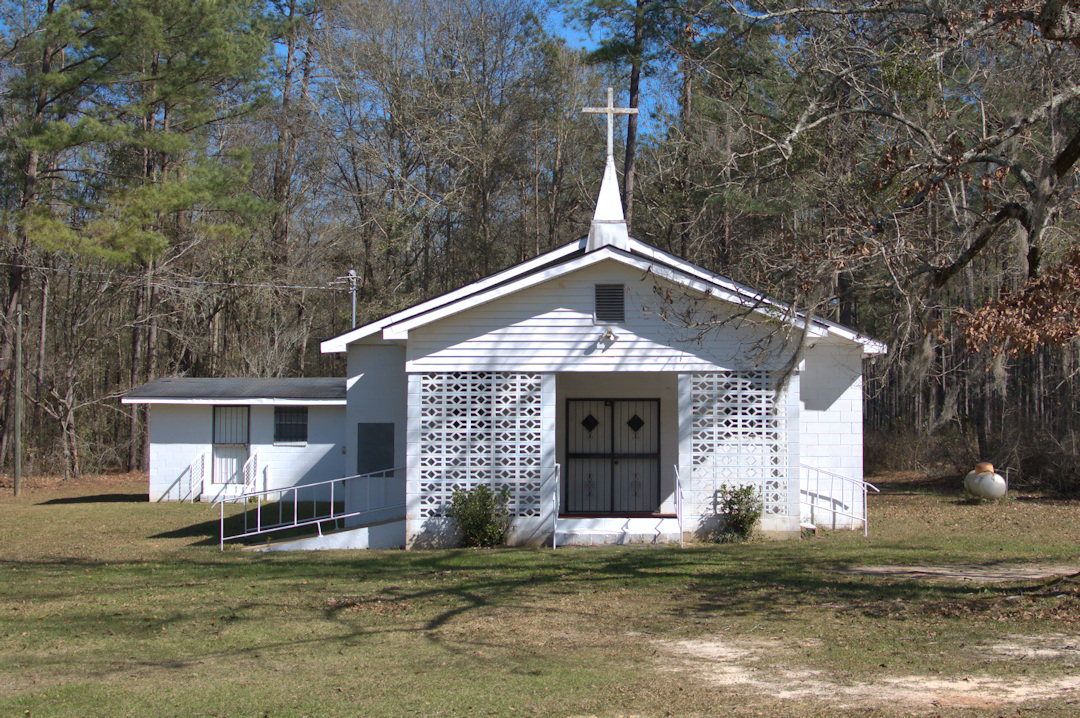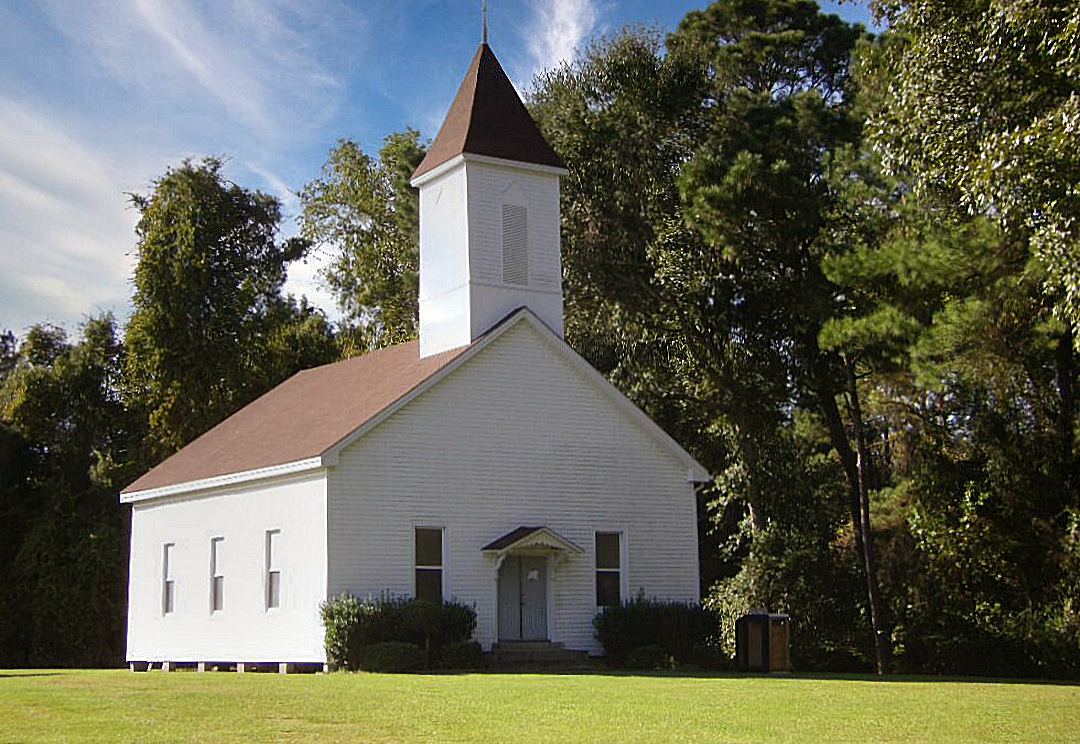
Now known as Evergreen United Church of Christ, this historic congregation was established in 1903 with the assistance of the American Missionary Association, an arm of the United Church of Christ focused on the construction and support of schools for Black children in the South. Under the leadership of Jerry Walden, Jr., a group of men in the Beachton community formed the Evergreen Congregational Church and built a wood-frame schoolhouse on land donated by Please Hawthorne. A frame church was built adjacent to the school in 1904. Rev. William H. Holloway, the first pastor, served until 1911.

The present school building was constructed in 1911 and renamed the Grady County Training School. It featured classrooms downstairs and residences for teachers upstairs and was designed by James E. Wright, Sr., of Thomasville, one of Georgia’s first professional Black architects. According to the Jack Hadley Black History Museum: “James Ernest Wright, Sr., (1887-1972), was the first African American architect in Thomasville, Georgia. He received his degree in architecture and brick masonry from the Tuskegee Institute during the tenure of Booker T. Washington. When he arrived in Thomasville in 1916, he drew plans for Mount Olive Primitive Baptist Church and helped build the barns at Pebble Hill Plantation.”

The old wooden church was demolished in 1925 and the present structure completed in 1928. Andrew Young, one of the leaders of the Civil Rights Movement, served as Evergreen’s pastor from 1957-1959, and wrote in his autobiography that the lessons he learned at Evergreen served him during the struggle for Civil Rights.
National Register of Historic Places

